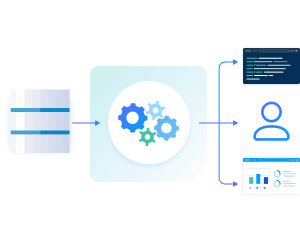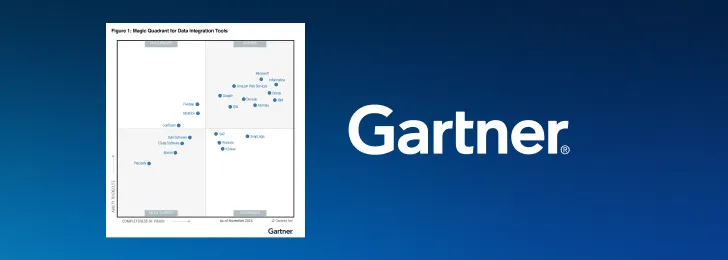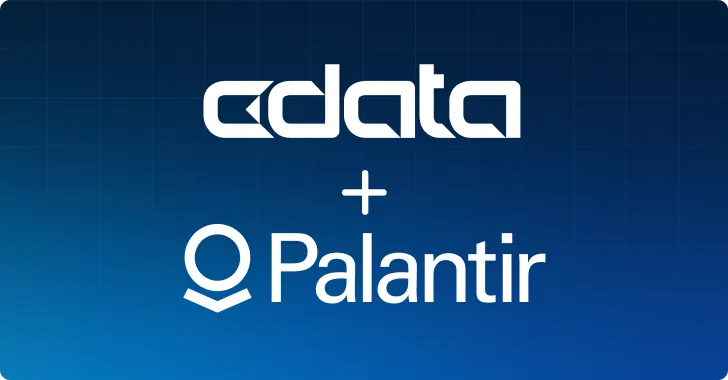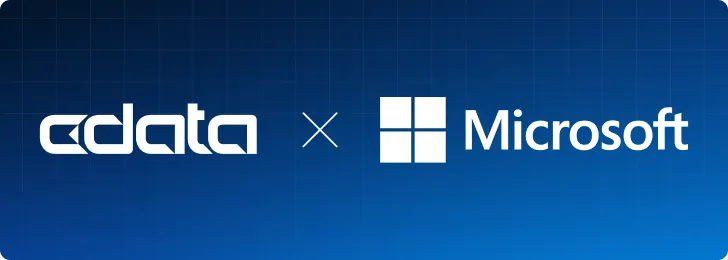
Data drives decisions in today’s business landscape, making efficient data management essential for organizational success. However, managing large and complex datasets presents challenges such as ensuring data quality, facilitating complex queries, and maintaining security — all critical to maintaining operational continuity. A Database management system (DBMS) provides a fundamental solution to these challenges, allowing organizations to store, organize, retrieve, and manage data efficiently.
In this blog post, we’ll dive deeper into DBMSs, their types, components, benefits, use cases, most popular DBMSs, and how CData can help enhance your data management capabilities.
What is a database management system (DBMS)?
A database management system (DBMS) is a software platform used to interact with and manage databases. It allows users and applications to store, retrieve, and manipulate data in a structured and organized manner. A DBMS is responsible for ensuring data consistency, security, and integrity across multiple users and applications.
It provides an interface for users to interact with data without needing to understand the complexities of data storage. DBMS solutions support various types of databases, such as relational databases, NoSQL databases, and more, depending on the specific use case and requirements
4 types of DBMS
Database management systems come in various forms, each designed to handle specific types of data and address a particular requirement. The selection of a DBMS depends on several factors, including data structure, scalability, and the intended use case of the application.
Here are the four most common types:
Relational database management systems (RDBMS)
Relational database management systems are one of the most popular and widely used types of DBMSs. They organize data into tables related to one another through keys (primary and foreign). RDBMSs rely heavily on Structured Query Language (SQL) to manipulate and access .
Popular examples:
- MySQL
- Microsoft SQL Server
- Oracle
Advantages:
- Data integrity: RDBMSs use normalization techniques to reduce redundancy and maintain consistency.
- Structured data management: They provide an efficient way to store and manage structured data in predefined schemas.
- Data security: With access control mechanisms and user permissions, RDBMSs offer strong data protection.
Limitations:
- Scalability issues: RDBMSs may struggle with scaling horizontally to handle massive data loads or high-volume transactions.
- Costly setup and maintenance: RDBMS solutions can be expensive, especially for large implementations requiring significant hardware resources.
NoSQL database management system
NoSQL databases are designed to handle unstructured and semi-structured data, offering more flexibility in terms of schema design. They are used for applications that require high scalability, fast performance, and the ability to handle big data.
Popular examples:
- MongoDB
- Cassandra
- DynamoDB
Advantages:
- Flexible schema: NoSQL allows for dynamic and schema-less data models, making it ideal for rapidly evolving data.
- Scalability: NoSQL systems are designed to scale horizontally, distributing data across multiple nodes to handle large datasets and high traffic.
- Performance: They are optimized for performance with low-latency operations, especially in high-speed read and write scenarios.
Limitations:
- Lack of ACID transactions: Some NoSQL systems do not support full ACID (Atomicity, Consistency, Isolation, Durability) compliance, which may be critical in certain applications.
- Query complexity: NoSQL databases often lack a standardized query language like SQL, making cross-database queries difficult.
Object-oriented database management system (OODBMS)
An Object-Oriented DBMS stores data in the form of objects, similar to the way data is structured in object-oriented programming languages. It allows developers to store complex data structures as objects, which makes the database more aligned with the application's data model.
Popular examples:
- GemStone/S
- Objectivity/DB
Advantages:
- Complex data handling: OODBMS excels at storing and managing complex, interconnected data.
- Native object representation: The use of objects allows for direct mapping between the application model and the database model.
Limitations:
- Steep learning curve: Developers unfamiliar with object-oriented programming concepts may struggle with understanding OODBMSs.
- Limited query support: OODBMSs may lack standardized query languages like SQL, which can make querying and managing data across different systems difficult.
Hierarchical database management system (HDBMS)
Hierarchical databases organize data in a tree-like structure, with parent-child relationships between records. This model is particularly useful for applications where data naturally fits into hierarchical categories.
Popular examples:
- IBM’s information management system (IMS)
- Microsoft’s Windows Registry
Advantages:
- Efficient data access: HDBMSs enable quick data retrieval through predefined paths, making them efficient for hierarchical data.
- Security: HDBMSs allow granular access control to manage permissions at different levels of the hierarchy.
Limitations:
- Rigid structure: The hierarchical model is inflexible, making it difficult to adapt to changes in the data structure.
- Limited query flexibility: Non-hierarchical queries can be cumbersome, as the data must be traversed along predefined paths.
Components of DBMS
A database management system is composed of several integrated components that work together to store, manage, and facilitate access to data. These components ensure that data is efficiently and securely handled, enabling smooth interactions between users, applications, and databases.
Here are some of the core components commonly found in DBMSs:
- Backup and recovery manager: This component creates backup copies of the database and facilitates recovery in the event of data loss or system failures, ensuring data integrity and availability.
- Data definition language (DDL) compiler: The DDL compiler is responsible for managing the definition of the database structure. It handles tasks such as creating, altering, and deleting tables and schema objects, defining the layout of the data storage.
- Database utilities: These utilities perform various maintenance tasks like data loading, data extraction, and data transformation. They ensure smooth operation and data quality throughout the lifecycle of the DBMS.
- DBMS engine: The DBMS engine is the core component that manages and controls interactions between the database and the users or application programs. It processes commands and performs the essential data manipulation operations.
- Query languages (e.g., SQL): A DBMS provides a standardized language, like SQL, for users and applications to interact with the database. SQL is the most common query language, enabling efficient querying, updating, and managing of data.
- Query processor: The query processor translates SQL queries into a series of operations that the DBMS engine can execute. This component ensures that requests for data are handled efficiently and accurately.
- Metadata catalog: The metadata catalog serves as a central repository for information about the structure, organization, and characteristics of the data managed by the DBMS. It helps maintain a clear understanding of how data is stored and accessed within the database system.
- Storage manager: The storage manager is responsible for managing how data is stored on physical storage media, such as hard drives. It optimizes the placement and retrieval of data, ensuring efficient data storage and access.
- Transaction manager: A transaction manager ensures the reliability and consistency of transactions within the DBMS. It manages the execution, commitment, and recovery of transactions, enforcing properties like ACID (Atomicity, Consistency, Isolation, Durability).
- Security and authorization module: This module enforces access controls and authentication mechanisms to ensure that only authorized users can access or modify specific data in the database. It plays a critical role in maintaining data security and privacy.
These components are just some of the many that work together in a DBMS to ensure the effective and secure management of data within a database system. The specific features and functionalities can vary depending on the type of DBMS and the vendor's implementation.
6 benefits of DBMS
Using a database management system (DBMS) for data storage and management offers numerous benefits, ensuring that data is handled efficiently and securely. Below are some key advantages of implementing a DBMS:
- Data consistency: A DBMS enforces data-consistency rules to ensure the accuracy and uniformity of your data across applications. This is particularly important in relational database systems (RDBMS), where maintaining consistency across multiple tables is essential for reliable data storage.
- Data availability: With a DBMS, your data is continuously available, allowing authorized users to access it even during system failures or disruptions. This high level of availability is crucial for businesses relying on real-time data access.
- Data-process automation: A DBMS enables the automation of various processes, including query execution, transaction management, task scheduling, data archiving, and data backup and recovery. This streamlines workflows and reduces manual intervention.
- Data security: A DBMS ensures data integrity and security through constraints on values and access controls (such as user permissions and access levels). These security features help regulate data access, preventing unauthorized users from modifying sensitive data.
- Data sharing: One of the key benefits of a DBMS is its ability to support multiple users and applications accessing the same data simultaneously. This makes data sharing efficient, facilitating collaboration and improving operational workflows.
- Data organization and management: A DBMS offers robust tools for organizing, indexing, and managing data. These tools not only enhance system performance but also reduce storage costs by optimizing how data is stored and retrieved.
As you can see, implementing a DBMS can significantly improve data quality, automate processes, reduce costs, and enable better business decisions by providing a secure, dependable, and efficient platform for storing and managing your data.
7 DBMS examples and use cases
The choice of a specific database management system depends on the application requirements and the nature of the data that needs to be managed. DBMSs are versatile and can be used across a wide range of industries, each with unique needs. Below are examples of how different industries utilize various types of database systems:
- Economics and finance: Financial firms use relational database systems (RDBMS) to store and manage information about customer transactions, stock market trades, bonds, mortgages, and other financial products. These systems ensure high data integrity and reliability for critical financial data storage.
- Healthcare: Healthcare organizations, such as hospitals and physician practices, rely on DBMSs to store patient records and medical history for health data management. The DBMS ensures that data storage complies with industry regulations and maintains patient confidentiality.
- Government: Government agencies use DBMSs to manage public records, regulatory data, and administrative information. A relational database system (RDBMS) is often employed to manage large volumes of structured data, ensuring data security and accessibility.
- Manufacturing: In manufacturing, DBMSs are used to manage production schedules, inventory, and quality control data. These systems ensure efficient data storage, helping organizations track resources and streamline production workflows.
- Research and academia: Universities and research institutions store and manage student information, research data, publications, and more with DBMSs. They rely on DBMSs for efficient data retrieval and analysis, particularly in fields requiring large datasets and complex queries.
- Retail: Retail businesses use DBMSs to manage inventory, customer transactions, and supply-chain data. A relational database system helps optimize data storage and management, ensuring accurate real-time information across the organization.
- Software: Software companies rely on DBMSs to store, manage, and migrate large volumes of data generated by the applications they develop. Data storage is crucial in ensuring performance, scalability, and secure access to the software’s operational data.
This list highlights just a portion of the many industries where DBMSs are utilized. These systems facilitate the efficient management, retrieval, and analysis of data tailored to the specific needs of an organization, whether in relational databases or other types of database systems.
Four most popular database management systems
As described previously, the choice of a database management system (DBMS) depends on various factors, such as the nature of your data, scalability requirements, performance needs, and more. While there are numerous DBMS options available, the following are some of the most well-known and widely used relational database systems (RDBMS) in industries today:
- Microsoft SQL Server (RDBMS): SQL Server's popularity can be attributed to its robust set of features and seamless integration with other Microsoft products. However, it is platform-dependent (primarily on Microsoft Windows) and can be resource-intensive, making it costly for some applications. Although there is a version for Linux, it lacks some of the advanced tools and features available in Windows environments. SQL Server is primarily used for enterprise-level data storage and management.
- Oracle MySQL (RDBMS): MySQL is an open-source relational database system known for its high performance, reliability, and ease of use. It is particularly favored in web applications and offers strong community support. As a widely adopted DBMS, MySQL facilitates seamless data storage and management for businesses seeking an affordable, open-source solution.
- Oracle (RDBMS): Oracle Database, commonly referred to as Oracle DBMS, is one of the most robust and feature-rich DBMS options available. It is designed for enterprise environments and is used for mission-critical applications, data storage, and complex business processes. Oracle’s scalability and comprehensive set of features make it a preferred choice for large corporations. However, Oracle DBMS comes with high licensing costs and complex setup and management, which can be a challenge for some businesses.
- PostgreSQL (RDBMS): PostgreSQL is an open-source DBMS known for its reliability, scalability, and feature set. It supports complex queries, transactions, and advanced indexing mechanisms. PostgreSQL emphasizes data integrity and data storage by adhering to ACID compliance to ensure reliable transaction processing. Its open-source nature has fostered a collaborative community, making it suitable for a wide range of applications, from small-scale projects to large enterprise solutions.
The CData difference
Maximize your data's potential with CData Sync. Easily create automated pipelines to replicate data across DBMSs, ensuring seamless integration and adaptability for any data environment. Start your free trial today!
Try CData Sync today
Get an interactive product tour of CData Sync and get started with a 30-day free trial today.





